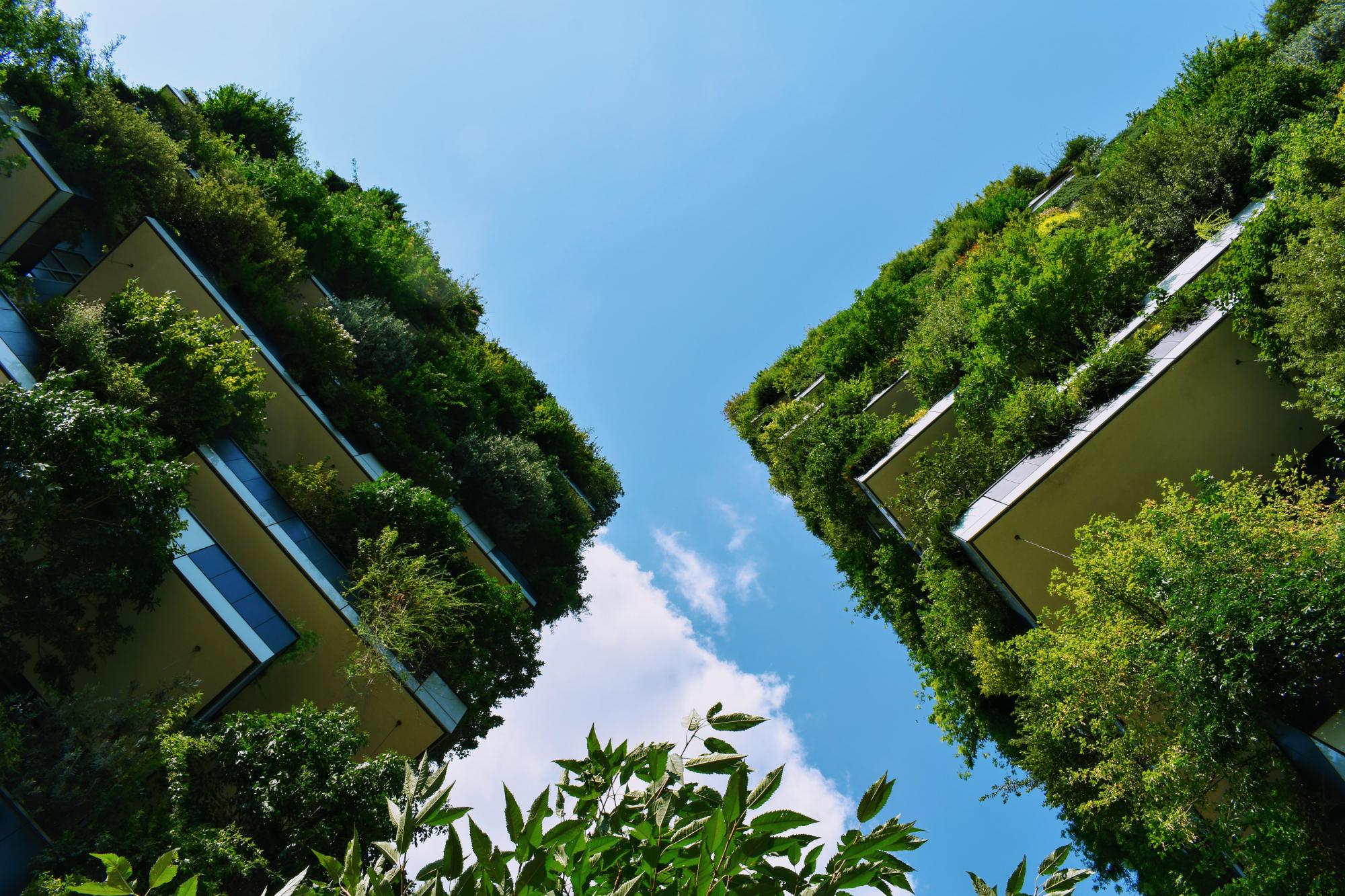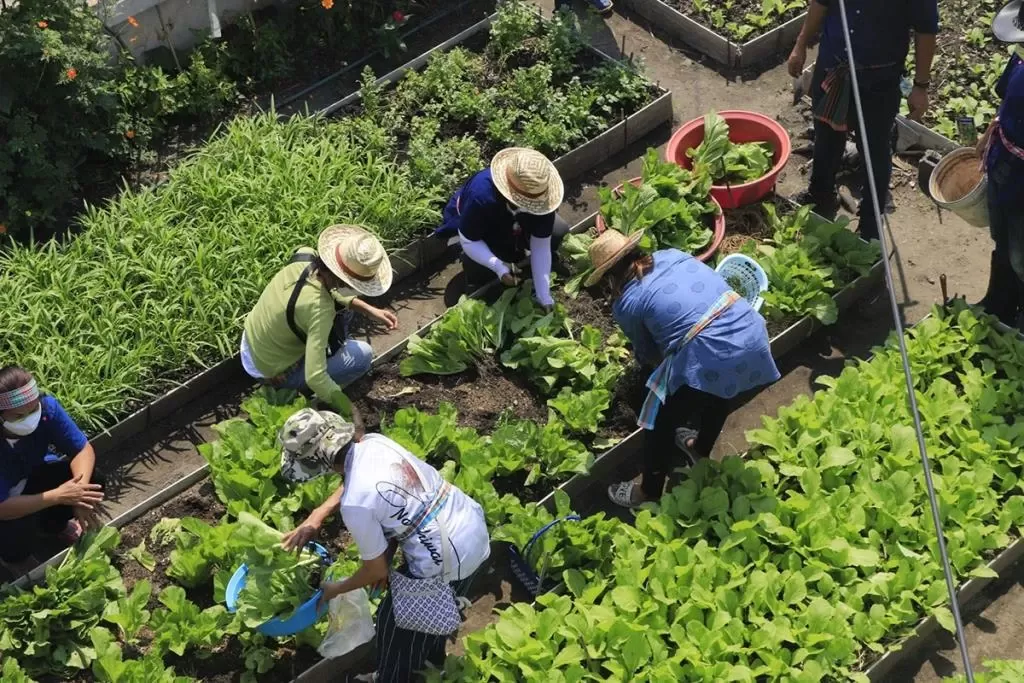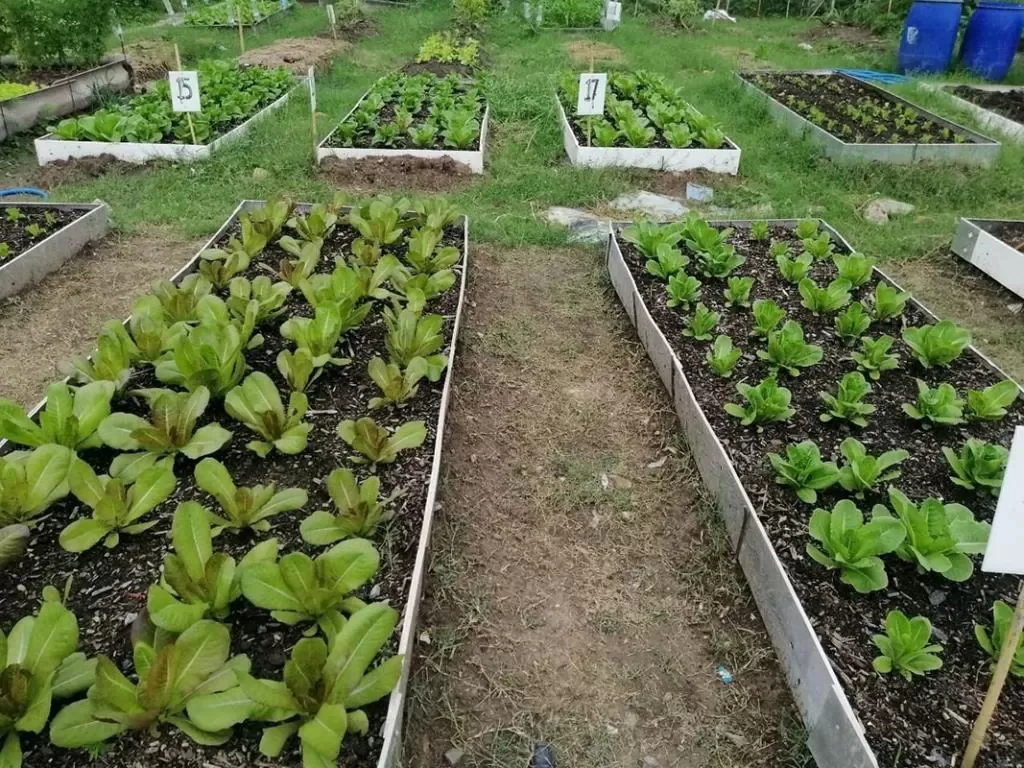Due to the growing population density and extreme climate events in Bangkok, Thailand, food security has become a more and more pressing issue for urban people. As a response, the Bangkok City Farm project was launched in 2010 by the Food and Nutrition Programme of the National Health Promotion Foundation. Implemented in collaboration with the Sustainable Agriculture Foundation Thailand (SAFT), the project aims to encourage and enable people in urban areas to grow their own food. The project offers financial support to anyone who wishes to start their own urban agricultural project, as well as training courses, access to food markets and knowledge sharing platforms. The implementation sites of the farms varies from private house gardens, community gardens, areas in informal settlements, school gardens and institutional green areas (such as hospitals and factories).(Ref. 1,2) The Bangkok City Farm's role in promoting food self-reliance and food security grew further during the COVID-19. As a result of the pandemic, many people in Bangkok - especially from underprivileged communities lost their jobs and their livelihood and access to sufficient and health food was threatened. Thus, as part of the project, green areas on vacant sites of the city were also created to support the out-of-work people with enabling them for self cultivation of their food. (Ref.6) As of 2022, there are 165 farms in Bangkok created through the project. Given the success and importance of the project, the project was scaled up into a nation-wide initiative called ‘Thai City Farm’. 'Thai City Farm' expanded the network to five other cities in Thailand. (Ref. 1,2)
Overview
Nature-based solution
- Community gardens and allotments
- Allotments
- Community gardens
- Grey infrastructure featuring greens
- Green playgrounds and school grounds
- Institutional green space
- Nature on buildings (external)
- Green roofs
Key challenges
- Climate action for adaptation, resilience and mitigation (SDG 13)
- Climate change adaptation
- Green space, habitats and biodiversity (SDG 15)
- Green space creation and/or management
- Regeneration, land-use and urban development
- Promote natural styles of landscape design for urban development
- Health and well-being (SDG 3)
- Improving mental health
- Improving physical health
- Creation of opportunities for recreation
- Social justice, cohesion and equity (SDG 10)
- Social justice and equity
- Social interaction
- Environmental education
- Economic development and employment (SDG 8)
- Economic development: agriculture
- Sustainable consumption and production (SDG 12)
- Sustainable consumption
- Sustainable production
Focus
Project objectives
Implementation activities
Climate-focused activities
Climate change adaptation:
- Other
Main beneficiaries
- Citizens or community groups
- Marginalized groups: Elderly people, Socio-economically disadvantaged populations (e.g. low-income households, unemployed)
- Food producers and cultivators (i.e. farmers, gardeners)
Governance
Management set-up
- Co-governance with government and non-government actors
Type of initiating organisation
- Non-government organisation/civil society
Participatory approaches/ community involvement
- Co-planning (e.g. stakeholder workshops, focus groups, participatory mapping)
- Dissemination of information and education
- Consultation (e.g. workshop, surveys, community meetings, town halls)
Details on the roles of the organisations involved in the project
Project implemented in response to ...
Financing
Total cost
Source(s) of funding
- Public national budget
Type of funding
- Direct funding (grants, subsidies, or self-financed projects by private entities)
Non-financial contribution
Impacts and Monitoring
Environmental impacts
- Environmental quality
- Improved soil quality
- Green space and habitat
- Promotion of naturalistic styles of landscape design for urban development
- Increased green space area
- Increased number of protection areas
- Increased conversion of degraded land or soil
- Reduced biodiversity loss
Economic impacts
- Increase of green jobs (e.g. paid employment positions)
- Increase in agricultural production (for profit or not)
- Generation of income from NBS
Socio-cultural impacts
- Social justice and cohesion
- Improved social cohesion
- Improved access to urban green space
- Increased visibility and opportunity for marginalised groups or indigenous peoples
- Increased opportunities for social interaction
- Increased involvement of locals in the management of green spaces
- Increased access to healthy/affordable food
- Increased sustainability of agriculture practices
- Health and wellbeing
- Gain in activities for recreation and exercise
- Education
- Increased knowledge of locals about local nature
- Increased awareness of NBS and their benefits
Type of reported impacts
Presence of formal monitoring system
Presence of indicators used in reporting
Presence of monitoring/ evaluation reports
Availability of a web-based monitoring tool
References
2. Thai City Farm (No date), สวนผักคนเมือง, Available at Source link (Accessed 04-04-2023)
3. Thai City Farm (No date), About me, Available at Source link (Accessed 04-04-2023)
4. Baanlaesuan (2022), คุยกับ “โครงการสวนผักคนเมือง” ที่ปรึกษาให้เราเริ่มต้นลงมือปลูกผักทานเองได้, Available at Source link (Accessed 05-04-2023)
5. Maneger Online (2022), ปลูกเอง-กินได้ ‘วรางคนางค์ นิ้มหัตถา’ สรรค์สร้าง ‘สวนผักคนเมือง’ ข้ามผ่านทุกวิกฤติเพราะพึ่งตนเอง, Available at Source link (Accessed 05-04-2023)
6. Thai Post(2021), เนรมิต'สวนผักในเมืองกรุง'เพื่อสร้างอาหารคน กทม., Available at Source link (Accessed 05-04-2023)
7. Bangkok Post (2020), New-wave urban farming, Source link (Accessed 05-04-2023)
8. Isara news(2021), เปลี่ยนที่รกร้างชุมชนเมืองเป็น'สวนผัก' สร้างงาน-รายได้เสริม สู้โควิด, Available at Source link (Accessed 06-04-2023)
9. Maneger Online (2021), “สวนผักคนเมือง” แหล่งอาหารชุมชนช่วงวิกฤตโควิด-19, Available at Source link (Accessed 13-04-2023)



